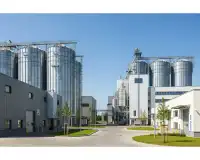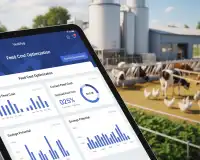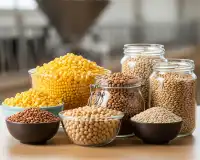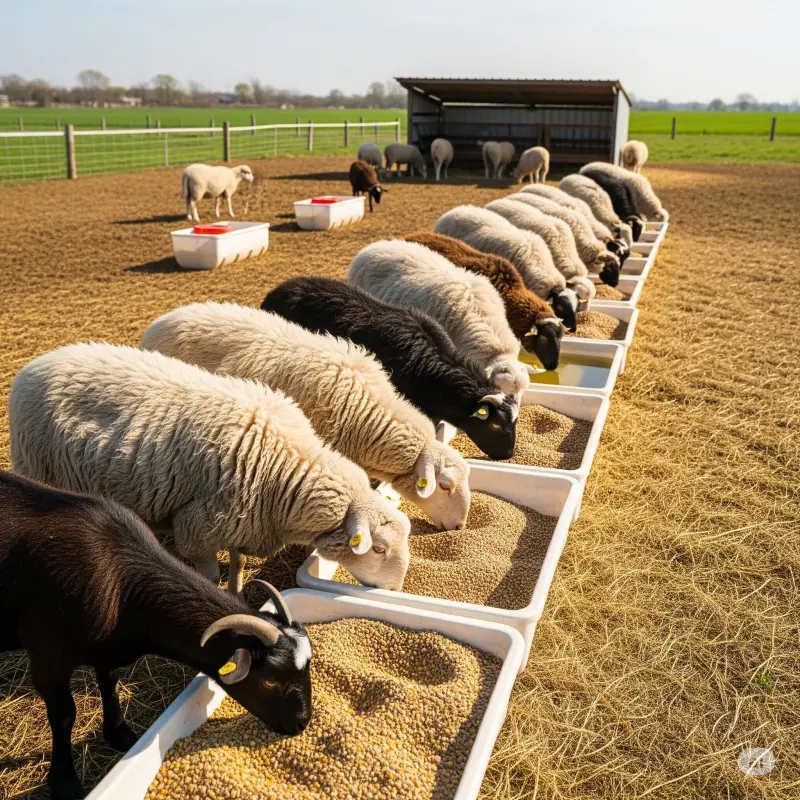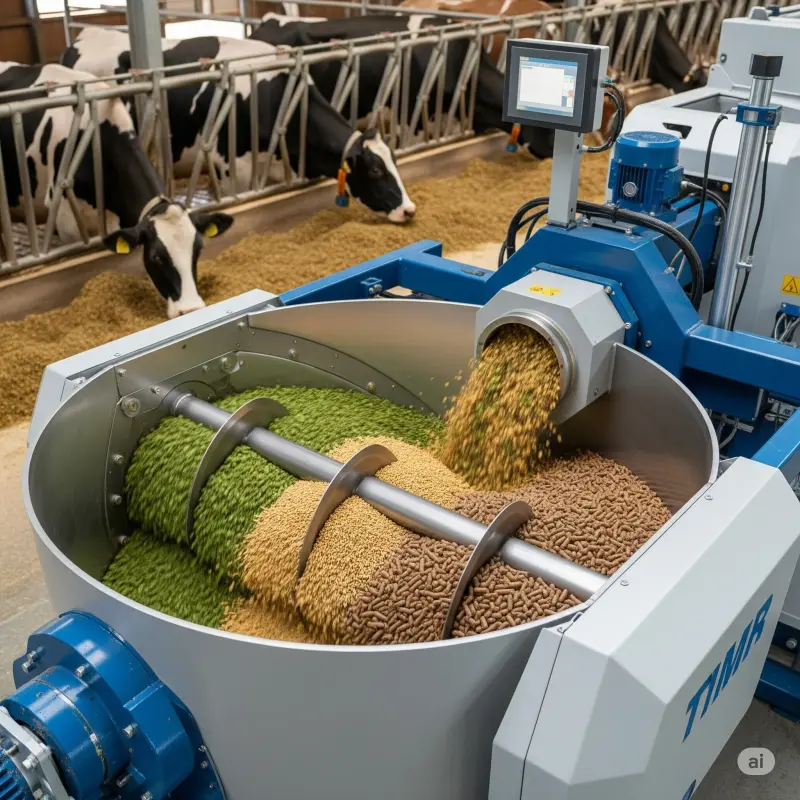Cattle Feeding Guide for Beginners
Proper feeding is essential for successful cattle farming! In this detailed guide, discover basic nutrient needs like energy, protein, fiber, vitamins, and minerals, common feed raw materials, and ration formulation techniques.

Why Is Cattle Feeding So Important?
A proper feeding strategy not only fills the animal's stomach but also:
- Fast and Healthy Growth: Supports optimal growth rate and healthy development, especially in young animals.
- High Production Yield: Ensures reaching targeted productivity levels in milk, meat, or calf production.
- Disease Resistance: Contributes to a strong immune system, reducing the risk of animals falling ill.
- Reproductive Performance: Crucial for regular estrus, easy pregnancy, and healthy calf birth in female animals. It also improves sperm quality in male animals.
- Cost-Effectiveness: Increases feed utilization rate with the right ration, thereby optimizing feed costs and preventing unnecessary waste.
Cattle Nutritional Requirements: Cornerstones
Cattle are herbivorous (ruminant) animals by virtue of their digestive system, and their nutritional needs vary according to age, sex, live weight, production level, and even environmental conditions. The main nutrient groups are:
- Energy: The fuel required for all vital activities (movement, maintaining body temperature, digestion) and production (growth, milk, meat) of the animal.
- **Sources:** Grains like corn, barley, wheat; molasses; high-energy roughages (silage).
- Protein: The basic building block for body tissues such as muscle, bone, milk, meat, and hair, and for the formation of regulatory substances like enzymes and hormones.
- **Sources:** Protein-rich feeds like soybean meal, sunflower meal, cottonseed meal; quality alfalfa hay.
- Fiber (Roughage): Indispensable, especially for ruminant animals, for the healthy functioning of their digestive systems, regulation of rumen movements, and feeling of fullness. Roughages can also be an important source of energy and protein.
- **Sources:** Dry hay (alfalfa, meadow grass), corn silage, straw, vetch.
- Vitamins: Critically important, even in very small amounts, for regulating metabolic events in the body, the immune system, and overall health.
- **Sources:** Vitamins A, D, E are usually provided with premixes. B and K vitamins can be synthesized by rumen microorganisms in ruminants.
- Minerals: Necessary for bone structure, nervous system functions, blood formation, and the functioning of many enzymes. They are divided into macro minerals (Calcium, Phosphorus, Magnesium, Sodium, Potassium) and trace minerals (Iron, Copper, Zinc, Selenium, Manganese, Iodine).
- **Sources:** Calcium carbonate (marble dust), dicalcium phosphate (DCP), salt, special mineral mixtures (premixes).
- Water: The most basic and most often overlooked nutrient. It plays a role in countless functions such as regulating body temperature, transporting nutrients, digestion, and removing waste products. Animals should always have free access to clean, fresh, and sufficient water. Measures should be taken to prevent water from freezing in winter and to keep it cool in summer.
Ration Formulation: Science and Art
The heart of cattle feeding is **ration formulation**. Combining different feed raw materials in the right proportions according to the animal's needs requires both scientific knowledge and experience.
Commonly Used Cattle Feed Raw Materials:
| Raw Material | Main Nutritional Value | Characteristics / Purpose of Use |
|---|---|---|
| Roughages | ||
| Corn Silage | Energy, Fiber | High energy content, highly digestible, appetite stimulant |
| Alfalfa Hay | Protein, Fiber, Calcium | High-quality protein source, good digestible fiber |
| Meadow Hay | Fiber, Variable Energy/Protein | Standard roughage, digestive regulator |
| Wheat Straw | High Fiber, Low Energy | Slows digestion, provides feeling of fullness, meets roughage needs |
| Concentrate Feeds (Energy Sources) | ||
| Corn Grain | High Energy | Most common energy source, easily digestible |
| Barley | Enerji, Lif | Enerji kaynağı, sindirim düzenleyici, lezzetli |
| Wheat | Energy | High energy, but can cause digestive problems if finely ground |
| Molasses (Sugar Beet Pulp) | Energy, Palatability | Increases feed intake, reduces dust, acts as a binder |
| Concentrate Feeds (Protein Sources) | ||
| Soybean Meal | Very High Protein | Most valuable vegetable protein source, suitable for all species |
| Sunflower Meal | Protein, Fiber | Most common protein after soy, high fiber content |
| Cottonseed Meal | Protein, Fiber, Fat | Provides protein and energy, attention should be paid to gossypol content |
| Canola Meal | Protein | Alternative to soy and sunflower, high nutritional value |
| Minerals and Vitamins (Premixes) | ||
| Calcium Carbonate | Calcium | Essential mineral for bone, milk, and meat formation |
| Dicalcium Phosphate (DCP) | Phosphorus, Calcium | Source of phosphorus and calcium for bone and general metabolism |
| Feed Salt (NaCl) | Sodium, Chlorine | Electrolyte balance, appetite stimulant |
| Cattle Premix | Various Vitamins and Trace Minerals | Special vitamin and mineral support according to animal species and production level |
Points to Consider When Formulating a Ration:
- Expert Support: Especially at the beginning, getting support from a veterinarian or agricultural engineer (animal nutrition specialist) is vital for creating correct rations.
- Performing Analysis: Determining the nutritional values of the raw materials you use through laboratory analysis is very important for the accuracy of the ration. Because even raw materials with the same name can have different nutritional values.
- Target-Oriented Feeding: You should differentiate your feeding program according to whether your animals are for fattening, milk, or breeding. Each goal has a different nutrient profile.
- Gradual Transition: Implement any changes in feeds or rations **slowly and gradually**. This helps the animals' digestive systems adapt to the new situation and prevents digestive problems.
- Feed Storage: Store feed raw materials and ready feeds in dry, cool, airy places away from rodents. Molding and spoilage reduce feed quality and threaten animal health.
- Water Quality and Quantity: Water is as important as the feed itself. Ensure your animals always have free access to clean and fresh water. Take measures to prevent water from freezing in winter and to keep it cool in summer.
- Individual Observation: Observe your animals regularly. Their appetite, vitality, stool consistency, and general appearance show how well the ration is working. Review the ration if there is any negative change.
Cattle feeding is an art that is mastered over time with experience. By applying these principles, you can provide the best nutrition for your animals and increase the overall productivity of your farm. Remember, healthy animals are the key to a profitable business.



